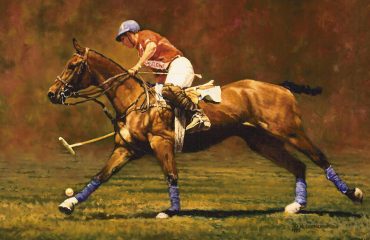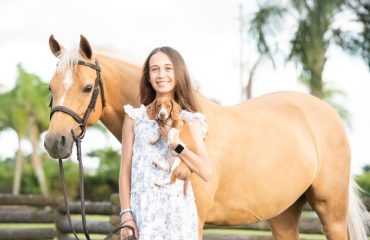When conditioning a horse, how do you know when to up the conditioning and take it a bit further or more strenuous, and how should you do the conditioning to avoid too much repetitive stress on the body and mind? — Kellie, via Facebook
With fitness training, you need a little bit of a game plan or schedule with a gentle increase in workload over time. This can be an increase in speed, an increase in distance or a bit of both. The number one thing is that your feeling as a rider takes precedence over what your schedule says. If you feel your horse is struggling or suffering, you need to back off and ease up. We want to push and increase as time goes on, but not to the point of exhaustion. I believe that’s when injuries pop up.
Everyone out there has access to different facilities. At our farm in Pennsylvania, we are spoiled with an all-weather track, a circular track, a conditioning pond and miles of hacking. Sometimes you have to make do with less-than-ideal facilities, but where there’s a will, there’s a way. My advice to riders out there who are unsure of what to do is to seek advice from a trainer or a high-level rider in your area that may be your coach, or who has access to the same facility as you and who spends time around you, knows your horse and uses the same gallops or track or hills that you have access to.
As time goes on, you’ll start getting a feel for how much to push your horse. Half is having that detailed plan of progression and the other half is going off your feel for the horse that’s under you.
I think the other key is to know what sort of animal you’re sitting on. The amount of fitness you need to do on a big, heavy warmblood compared to a Thoroughbred can vary significantly. Competing at Novice or Training, that warmblood might need twice the conditioning of a horse that just finished racing. Note that especially with the Thoroughbreds, it’s very easy to get them too fit, or to push them past where they need to be, just due to your enthusiasm. Keep in mind that while you want your horse fit and up to the task, you want a horse that is rideable and not jumping out of his skin at the lower levels.
What’s your routine for caring for your horse after each phase of an event? — Mary, via Facebook
Like any athlete, horses need special care after they’ve put in a big, hard run. Following a cross-country run, step one is to cool the animal as quickly as possible. Usually a horse is hot and blowing quite hard; the quicker you can get water on the horse, the better. Once you get cold water on the horse, he heats up quickly, so keep scraping the horse and applying more cold water. When the horse is cool, we try to give them a drink and let them rehydrate.
Once a horse is cooled down completely, we have them stand in ice boots. I like the ones that cover their knees, so they’re submerged in icy water that freezes the feet, ankles, tendons and knees. I like to do this for about 20-25 minutes. After that, we dry the legs off and put stable bandages on; if the horse has had a hard run, Steph will massage some liniment or some swell-down mud on the horse’s legs. We use flannel wraps and I find they’re the safest when it comes to bandaging.
The upper-level horses usually get the BEMER blanket on every evening, which helps stimulate blood flow, and usually we’ll stand the older horses on the Thera-Plate for half an hour, which also helps increase circulation.
After dressage or show jumping, if I have a really, really intense session or a big jump school, I usually wrap the horse’s legs. We don’t usually ice them unless the horse has a particular injury.
Photo
Boyd says following a cross-country run, step one is to cool the animal as quickly as possible.
Photo by Ruby Tevis













